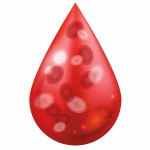Among HIV-positive individuals age 50 and older, having started treatment for the virus before 1999 or having taken older antiretroviral (ARV) medications were the factors most strongly associated with type 2 diabetes in a recent study, aidsmap reports.
Publishing their findings in BMJ Open Diabetes Research & Care, researchers conducted a study of people who started HIV treatment at a hospital in Vancouver, British Columbia, through July 2015. Eighty-nine percent of the group was male, 83 percent was white, 43 percent was coinfected with hepatitis C virus (HCV) and 31 percent was diagnosed with an AIDS-defining illness at some point during follow-up.
Looking at the 1,065 people who were age 50 or older in July 2015, the researchers found that 235 of them developed type 2 diabetes during an average 13 years of follow-up. This translated to a diagnosis rate of 1.61 new cases per cumulative 100 years of follow-up (meaning if 10,000 similar people were followed for one year, an estimated 161 of them would develop type 2 diabetes). This rate is 39 percent higher than that observed among the general population in Canada.
The study authors did not identify any significant association between developing diabetes and an individual’s age when diagnosed with HIV, age upon starting ARVs, hep C status, use of injection drugs, sex, weight or most recent body mass index.
Factors associated with developing type 2 diabetes included having a lower lowest-ever CD4 count, a lower CD4 cell count when starting ARVs and starting HIV treatment between 1997 and 2004. Starting HIV treatment with a non-nucleoside reverse transcriptase inhibitor (NNRTI) was associated with a lower likelihood of type 2 diabetes.
After adjusting their data for various factors, the researchers found that those who began ARVs between 1997 and 2004 were 48.9 times more likely to develop type 2 diabetes compared with those who began ARVs between 2005 and 2009.
Compared with those who did not take these respective ARVs, having taken Zerit (stavudine, or d4T), Retrovir (zidovudine, or AZT), lopinavir (which, along with ritonavir, is included in Kaletra), Crixivan (indinavir) and Viracept (nelfinavir) was in each case associated with developing type 2 diabetes. For those who took Zerit and Viracept, each 10 percent relative increase in the time spent on each ARV was associated with a respective 39 percent and 63 percent increase in the risk for diabetes.
To read the aidsmap article, click here.
To read the study abstract, click here.







2 Comments
2 Comments